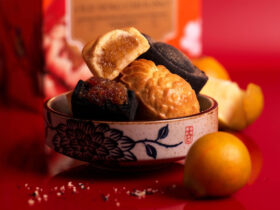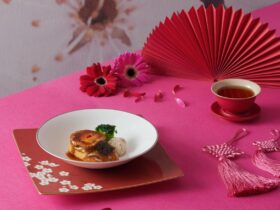
Ever wondered why we eat what we do during the Lunar New Year? We break it down for you
The Chinese or Lunar New Year is coming soon, at the end of the month. You might have noticed that there are many menus carrying the same food items.
Here we present a few common food items or dishes that are eaten during Lunar New Year, and why.
Yu Sheng
This raw fish salad, also known colloquially as Lo-Hei in Cantonese, is predominantly eaten by the Chinese in Singapore and Malaysia, although versions of the dish have existed in China.
Created by four master chefs back in the day, the dish has since gained huge popularity amongst restaurants and households alike.
Tossing the salad while shouting various auspicious wishes is good fun at a gathering as well.
Pen Cai
Pen Cai was invented during the late Song Dynasty. During the war, the Emperor fled to Guangdong and the villagers, wanting to serve him well, gathered all their best food into a wooden basin for the Emperor’s consumption.
This tradition then evolved into the Pen Cai we know today, filled with expensive foods. These days, it is usually a symbol of opulence, and can cost a bomb.
Nian Gao
One legend about this “kueh” of sorts comes from that of the monster, Nian. Every year, the monster would terrorise villagers by eating them until a baker named Gao baked some pastries to distract the monster, thus filling its belly with the heavy cake.
The monster then retreated back to the mountains without eating any villagers. This is how the kueh called Nian Gao supposedly came about. Nian Gao may be sweet or savoury, depending if molasses are added to the preparation process.
Dumplings
Traditionally, dumplings are consumed in Northern China for good luck and fortune as the dumplings are said to resemble the shape of ingots.
They are usually stuffed with pork and chives and can be steamed, boiled or fried, depending on your preference.

Tang Yuan
Symbolic of the Mandarin saying of “tuan tuan yuan yuan”, meaning “reunion”, Tang Yuan is traditionally eaten on the first day of the Lunar New Year.
These cute rice flour dumplings come in a syrupy soup to symbolise reunion and happiness. These days, they can be filled with peanuts, red bean paste, yam paste, sesame paste or even green tea paste.
Pineapple Tarts
This crowd-pleaser is also eaten during Hari Raya and is usually considered to be a festive cookie. For the Chinese, pineapples signify wealth and fortune.
Nowadays, pineapple tarts in Singapore are available in many variations such as the Taiwanese fengli su.
ADVERTISEMENTS










Leave a Reply